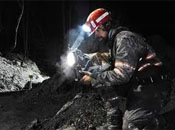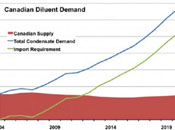These 2013 oil price forecasts were all over the place, owing to the high level of uncertainty on a number of basic elements.
According to the Russian Ministry of Energy, or Minenergo, the "official" government estimate has oil prices low - at about $80 a barrel in 2013.
However, there were other estimates floating about. The Ministry of Finance (MinFin) set up what can only be described as a recession approach. That figure puts oil prices at $62-$65 a barrel.
Then there was the Ministry of Economic Development (MED). MED considered both domestic and external trade considerations. The estimate coming from this ministry was lower than that of Minenergo, but at $75 a barrel was higher than that of MinFin.
Against this backdrop of competing forecasts made by battling Russian ministries, estimates from the outside including my own are much, much different-as in decidedly to the upside.
Granted, all of the non-Russian suggestions cite the three unknowns limiting the cost of crude elsewhere: the fiscal cliff, the Eurozone debt crisis, and the expected levels of productivity and demand coming from China.
Nonetheless, a strong consensus did emerge from North American and European experts during our sidebar conversations in Moscow.
The overwhelming view was that oil prices will be moving higher next year, although the continuing volatility will guarantee that this is hardly going to be a straight line advance.
Even still, there will be a number of factors that will push Brent and WTI prices as much as 20% higher next year-particularly in the first quarter.
Here's why oil will still remain a "must-have" investment next year.
2013 Oil Price Forecast: Oil Prices Are Set to Rise
First, attendant to the three concerns mentioned above, we all noted the following. There is little likelihood shared by anybody I spoke to that the "bickering children" inside the Beltway would actually allow the U.S. market to fall off the fiscal cliff.
There will be a more or less cosmetic remedy arrived at setting the stage for more substantive decisions later. Much of this is not going to be received well by the stock market, but that will work itself out in short order.
On the European scene, I must admit that the optimism witnessed in Frankfurt and Warsaw a few weeks ago was more pronounced in Moscow among the Europeans there.
Nobody believes the softness in the continental economy will be disappearing anytime soon. But the stark fears of a collapse in the Eurozone, so much a staple of the talking heads repertory on TV throughout much of 2012, is simply absent as we move to the end of the year.
As for China, we all agreed that this has been much ado about nothing.
The Chinese economy has "cooled" to an annual rise in excess of 7%. The demand level is still there and so is the enticement level expected from a quickly expanding Chinese middle class.
These three elements, therefore, are converging in a way more supportive of higher crude prices. All of them are on the demand side of the equation. As each improves, so also will the projections for oil and oil product volume.
Supply Fundamentals Will Drive Oil Prices Upward
On the supply side, we continue to witness rising costs in both conventional and unconventional crude production.
This development largely results from the smaller fields, inferior quality crude, and accelerating infrastructure expenses associated with drilling. Combined with these are the ever-present geopolitical problems in the Persian Gulf, Syria and North Africa.
These considerations translate into higher crude prices in the first half of 2013.
At this point, we had some divergence on what those prices would be. At a minimum, all agreed that Brent would be at no less than $115, and WTI no less than $95 by the end of the first quarter.
My view, on the other hand, puts both a bit higher - Brent at $127 and WTI at $105 by March 31. Most of this should be fueled by rising indicators of economic recovery (even sluggish signals) on both sides of the Atlantic.
Should the Iranian situation deteriorate, or the standoff between Iraqi central forces and Kurdish provisional militia (the peshmerga) worsen, the situation in the Persian Gulf alone would add a risk premium to both benchmarks as well.
All of these factors will continue to make oil one of the top profit plays next year.
Kent Moors
Oil & Energy Investor























































